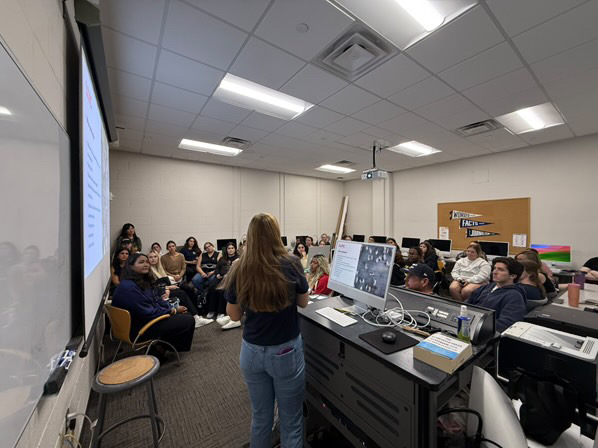Gender inequality affects college classrooms
Boys and girls continue to be drastically different when it comes to education.
A New York Times article was written based on an opinionated blog piece by Christina Hoff. The piece, titled “The boys at the back,” focused on the idea that school is designed in favor of girls rather than boys.
The article focuses on grades K-5 and expresses that although boys tend to score higher on tests, they still fall short when it comes to receiving better overall grades. It is also said that boys are less likely to attend college and take advanced classes.
Although the study stopped at fifth grade, the patterns could continue on. Once there is a fault in the learning process in younger grades, it is hard to fix and it can continue through a student’s college career, according to the study.
“The student arrives in the sixth grade without having all of the second grade parts, and the production line can’t figure out how to go back and install those missing parts. The schools keep trying to produce uniform ‘products’ and they can’t reach that goal,” said Dr. Thomas Blume, associate professor in couple and family specialization at Oakland University.
The high school drop out rate for boys and girls is now one in four students, but boys are the ones keeping this rate high, according to collegestats.org. These gender inequality statistics present in grades k-12 continue to affect college life for males.
Today, women outnumber men in 57 percent of colleges. It is also predicted that by the year 2020 more than a million more women will have earned a college degree than men.
Though there’s a specific issue with the male gender succeeding less, there’s currently no specific reason.
“I think it’s the larger social context, in which academic success and white-collar careers are now seen as girly,” Blume said. “The doctors, the lawyers, and the engineers are not really masculine, they don’t get their hands dirty and they can’t lift heavy objects. So the boys aspire to play football and join the Marines, and they think they don’t have to study to do that.”
It is not just the jobs that are affecting college for males. The journey to the jobs itself also faces challenges.
According to the article, grades usually depend on the behaviors, personalities and actions of boys and girls. Girls are said to be able to sit still longer and learn, where boys learn better with hands-on activities.
“I learn better when doing hands-on activities in college,” senior Mike Kepler said. “Sitting through a lecture, I lose interest and concentration.”
As many students notice, the average college course is spent sitting at a desk listening to a lecture for a few hours. However, many boys do not learn best this way, which may affect their learning experience and ambition.
“I’m more of a hands-on learner,” student Benny Sorrentino said. “Applying the things you learn by doing hands-on activities you grasp a better understanding.”










